|
Today a lot of articles and radio features will appear, reminding us that Halloween as we know it originated as Samhain in Celtic paganism, that jack-o-lanterns were originally carved turnips, and that people originally wore masks to avoid harmful spirits while welcoming those of their ancestors on this night when the space between the worlds of living and dead is thin.
But I'd like to suggest to you that tonight and tomorrow represent more than inconsequential historical trivia. And that they relate to more than Ireland! When traditions persist for more than 5,000 years, we might want to take them seriously. Read on for just a few examples of similar celebrations at the same time, and a few thoughts on what we might take from the awareness that welcoming the dead and recognizing the thin place between worlds at this moment of the year has seemed significant for a long, long time. Hanal Pixán
More than 41 indigenous groups in Mexico hold celebrations for the dead from October 31-November 2. Although the country's Día de Muertos represents a fusion of ancient beliefs and rituals with those brought by Christian Spaniards, hints of the oldest ways can be seen in the particularities of a region's celebration. The Yucatan observes Mayan customs more than 3,000 years old during Hanal Pixán (literally, "food for the souls" in the Mayan language). These traditions include marking a path for deceased relatives to find their way home, setting places at the table for them, and the holiday's signature dish, mucbipollo, literally "chicken" (Spanish) "that has been buried" (Mayan).
Traditionally, the dish--similar to a large tamale--made with corn and chicken (or sometimes pork) is wrapped in banana leaves and then cooked in a pit in the family's yard, with embers heating limestone at the bottom and more wood placed on top of the wrapped bundles. In the Mayan creation story, humans were made of corn. Here we have the corn (human) descending into the pit of the earth, being literally buried, and then re-emerging ... as food for the souls. Dziady
Dziady, or "grandfathers," is the Polish word for ancient Slavic celebrations "strongly linked to a conviction that during seasonal changes, especially autumn at the turn of October and November, the spirits of the dead returned to the world of the living from the afterworld, making it possible to interact with one’s ancestors." Customs included offering ancestors food, wearing masks, making ceremonial fires, and celebrating in the graveyard, as well as pouring sacrificial blood.
Samhain
Let’s not leave out the Celts! But maybe not even the Celts, because some mounds like those above are 4,500 to 5,000 years old, predating when the Celts arrived in Ireland. At any rate, in addition to the various aspects of Samhain you may have heard cited as antecedents for Halloween, there are also mounds, or passage tombs, around Ireland with a connection to this holiday.
Whereas the Mayan corn being lowered into the pit probably creates a grave-like image for you, it would be hard to see the openings in the images above as anything other than vulvas. Walking into these mounds, you are not being buried in the Earth, but fucking Her. These mounds have inner passageways decorated with astrological and symbolic motifs. They were often surrounded by vast ritual complexes and standing stones, some that would likely rival Stonehenge if they remained intact today. One feature of these mounds is a carefully calibrated opening that allows the sun to pierce the inner chamber exactly twice per year – – for some, like the Mound of the Hostages, those two days were Samhain, and its spring counterpart, Beltane. Imagine the sun ritually penetrating the Earth's dark opening on this High Holy Day . . . yeah, you get it. Mokosz's Holiday
Mokosz, or Mokosha, or Mokusa, is an ancient Slavic goddess worshipped by what today are Russians, Ukranians, Poles, Czechs, and others. Her annual holiday was held from October 25-November 1, right during the time of a seasonal Dziady festival (see above). She is described often as an "Earth Mother" goddess ruling childbirth, but that is a later compression. Our society has been dyadic for so long that it is hard for us to feel our way into Her true nature.
Read about Her a little, and you find that Her name means "damp." She rules weaving, and thus is associated with spiders, Fate, and divination. Go back to the older stories and She is also the Goddess of Sex and Death. Mokosz is the Damp, Sex-Earth Mother of the Irish mounds, beautiful and alluring, fierce and a little scary, definitely bigger than we can understand. Watch the music video above dedicated to Her and you will get the sense of Her better than dry words can convey. (Also notice that it fits perfectly with Halloween.) So what?
So what do we make of this? Well, here are a few things that come to my mind. Maybe you will think of some more (in which case, comment and share)!
We are headed into the dark days of the year. Earlier this month, Jupiter moved into Scorpio for the first time since 2006, where it will reside for the next 13 months. This brings the chance to expand our boundaries even to mythic proportions (Jupiter) in the hidden areas of our lives (Scorpio) -- sex, death, what has been taboo, and our archetypal shadow. Like a good researcher, Scorpio brings to the surface what has been hidden. It facilitates the Plutonic transformation--that great archetypal passage into the shadow, our personal cave. This year, even more than most, we might benefit from embracing the dark. Let me know if I can help you with your journey.
1 Comment
My daily practice post of last week referenced this humorous video of Brené Brown's about blaming (from the Royal Society for the Encouragement of the Arts).
Her story will make you laugh, and perhaps wince in recognition, but watch to the end to learn about the research on the habit of blaming.
She says, "Blame is simply the discharging of anger and pain." Wow! That's definitely what comes across to me on Facebook these days -- lots of anger and pain being discharged, not much actual communication going on. That's an important benefit, though -- what will we do to manage the anger and pain we are feeling if we choose not to resort to immediate fault finding and attack? She says blame has an inverse relationship with accountability. Why? Because accountability is a vulnerable process. It requires you to contact someone and say, "Hey my feelings were really hurt by this." The blaming process exhausts us -- after raging for 15 seconds and identifying whose fault something is, not only have we expended the energy we needed to actually talk to the person about it, how will we push through all that blame and anger we've generated to get back to an honest expression of being hurt and a request for accountability? Brown says blaming is toxic to relationships because when we are making the connections as quickly as we can to figure out whose fault it is, we are not really listening. She points out that relationship requires slowing down, listening, and allowing empathy to arise. But I would go further -- even from a self-centered or goal-oriented standpoint, in Brown's story, her blaming cut off her husband's potential empathy for HER. We do this to ourselves all the time -- act in opposition to what we really want, which is to feel deeply heard and understood. People have a hard time doing that when they feel attacked. How do we tell people something hard in a way they can actually hear? These questions I'm asking are hard ones, and this is why I often ask clients and students (and myself!), "What is your communicative goal?" If we are trying to change people's minds or hearts, or build a movement, we will not succeed by pointing out all the reasons those people are wrong or at fault (especially in shaming, snarky, or superior ways). That is not a moral statement; it is just a fact. I could say so, so much about this (because one of my specialties is systems analysis and what actually does work to shift culture!), but maybe it's better to let it percolate through your soul awhile and see what bubbles up for you. I will share one thing bubbling up for me today, which is my frustration that sometimes the effort not to be sucked into this toxic habit feels like it takes my voice from me. Here is a very personal example. A mental health provider of mine for the past several years recently treated me in a way I found very hurtful. I managed to tell him so via email relatively calmly, owning that I felt hurt and why. He responded more thoughtfully and seemed to leave an opening where I could reflect some things back to him about his practice that do not align well with his client base. I know he is a good person, and I know these things are unconscious on his part, but every time I try to write to him, my language tips from trying to share my point of view in a way he might hear, understand, and care about, to berating him with a list of issues that, while true, even I recognize as a finger-pointing, fault-finding rant. I feel so frustrated that I KNOW the culture game, and I STILL can't escape it. I am struggling, but I am determined to end up on the side of genuine communication. I'm sure it won't be perfect! But it will reflect a hard-fought effort to get outside this water we swim in, at least. So when you don't see me posting right away about a public issue or current event, it is not that I am unaware of it or indifferent to it. It is often that I am struggling to find a way to express myself that is not making me a tool of the culture. I really do believe that this mindful struggle we engage in (and I know I am not alone) does more to change the world than any logical argument. What are your observations about the blame game -- how it works in our culture or your own struggles with it? Share in the comments. 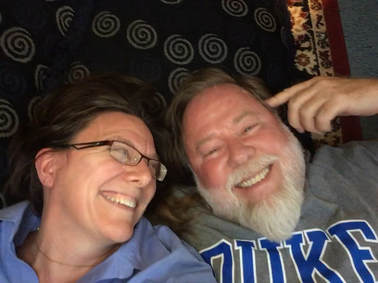 Frank and me this week, blissed out as usual, on our anniversary of meeting. Frank and me this week, blissed out as usual, on our anniversary of meeting. This daily practice celebrates the first time my Beloved sent me a Rumi poem. We had just met the day before, so this was his “follow up” message to our initial delight and amazement with each other. There wasn’t much preamble; just “Here are Coleman Barks and David Darling channeling Rumi’s comments on our time together yesterday! ‘What else could human beings want?’” with a link to a video of Rumi interpreter Coleman Barks reading a poem accompanied by a (somewhat distracting) cellist. Knowing him as I do now, I know that Frank was really saying, “Here is something that has kept me alive,” and asking, “Are you interested in a life of bliss, if it works like this?” In other words, he put his heart on a platter and sent it off to me, waiting for my reply with both his characteristic hopefulness, and also his awareness borne of experience that disappointment was a real possibility. I asked him about it this morning, and he said, “I remember feeling good about sending it and feeling that it was likely you’d resonate with it, and then feeling huge joy and relief when you did.” So what is it about poetry from a 13th century Sufi mystic that can help you recover from a toxic culture and learn to live in bliss? I really want to boil this down, because you could go on and on about all the different ways Rumi is amazing (and people do). But I want to persuade you here that a daily supplement of Rumi can change your life for the better. So I will say only one thing, but it is a big thing! Reading Rumi will teach you to recognize that bliss does not require the absence of sorrow. One of the false messages of our culture is that happiness requires the lack of sadness, worry, or trouble. When all the monsters are killed, and all our fortunes won, then we will live happily ever after. This is how our modern culture has passed fairy tales on to us. But that has never been how the oldest stories have ever gone. Let’s think about this for a minute. If everything had to be perfect to have bliss, no one could ever be blissful for long. Even if you have a moment of perfection, it is going to be fleeting by definition, because life is constant change. If we believe that happiness requires everything to be okay, we might strive our whole lives for those few brief moments when everything lines up, and then be devastated and heartbroken when those moments pass. We might even feel like giving up on life lived that way (I know I have). So that seems like a set up, but go a little further, and the seams rip out of the whole story. My father often quotes Carl Dean Selby in his sermons -- a resident at Muscatatuck State Hospital in Indiana who liked to say, “Love is trouble, because it makes you care.” Well, obviously, that’s true – a friend of mine once told me that raising children was like putting her heart out in the open street, and just hoping no one would run over it. The reason we have sorrow is because we care. But if love is trouble, and bliss is the absence of trouble, then bliss would require the absence of love! Set aside esoteric mysticism for a moment; that's not even logical. When you contemplate how we could be persuaded to believe something that not only isn’t good for us, but can’t be true, then you begin to understand how systems work. Because culture is, after all, just another system. And systems resist change. One way culture does that is to give us a filter that affects everything we see but is laborious to explain.  What? I can see fine! What? I can see fine! Imagine if someone were wearing glasses that distorted their vision but that they couldn’t discern. Now try to explain to them that everything they see is distorted; to do so you will have to describe these lenses they’re wearing, and through that description enable them to start perceiving the weight of the frames on their face or the effect of looking through them. It’s exhausting to describe in linear means, which is why philosophers like Alan Watts reach relatively few people. His insights are brilliant and right, but so complicated to read that it kind of makes your brain hurt. This is what Rumi accomplishes. He doesn’t describe the cultural lens; he describes the world through a different lens, and by doing so, allows you to begin to see the difference. Like Watts, Rumi explains how to release anxiety and how to find bliss -- and with basically the same answer. Rumi says that what makes life blissful and worth living is deep love and appreciation for the Divine sweetness of life. And this requires holding sorrow, and longing, and grief, because every moment of that sweetness must be fleeting. This is the true meaning of living in ecstasy. In a 1995 interview, Coleman Barks described our ecstatic core as the part of us that looks up in wonder. He said: “When I was a child in Chattanooga, sometimes in April … when that spring gold light would come, at the end of the day that’s just there for about ten minutes? You know what I’m talking about? in the South? That gold time? I could hardly stand it as a child. I would — I would lay down and hug myself. And I’d … say, “Mama, I’ve got that full feeling again,” just laying on the floor holding myself, you know? And she’d say, “I know you do, honey.” So, you know, I grew up … living in this beautiful, gorgeous place of the Tennessee Valley, and around all of these ecstatic teachers." Barks finds this upbringing notable because it is rare. Few of us have had ecstatic teachers like Barks's mother. Most of us have learned to push away or hurry along difficult emotions, even if the cost is pushing away or hurrying along ecstasy as well. Rumi says instead that we have to let ourselves feel the discomfort, the anxiety, the awareness of loss, in order to feel the joy. And he himself was no stranger to sorrow. His family were forced migrants staying ahead of the Mongol invasions. He lost his most beloved friend, possibly to murder by his own community in an effort to get him back to his culturally prescribed role as a jurist and teacher. His poems aren't rose-colored joy through denial of reality. They frankly address longing and grief -- but as part of ecstasy, not what keeps us from it. When you learn that you don't have to deny pain to claim joy, you realize you no longer have to feel guilty for being happy. That idea is just another bit of cultural gaslighting. The idea that our goodness is somehow calibrated to our outrage or despair serves to burn out activists (if not kill us with stress). One of my most powerful mentors, Cynthia Brown, used to say, "Don't mess with my blessing!" Just as fierce as her commitment to social justice was her certainty that joy is part of the revolution. Living in bliss does require sitting with uncertainty. Letting go of the story that happiness comes from things working out also means acknowledging that things might not work out. That's really the story we're in thrall to -- the myth that we can control things. Brené Brown says that we want that semblance of control so much, we'd rather beat ourselves up than let go of finding fault altogether! It astonishes me to realize that I spent most of my life being hard on myself and feeling frustrated, depressed, unfulfilled, or angry purely because I wouldn't let go of the story that I should be able to make things work out. It especially astonishes me because 1) I thought I was a rational person, and that is completely illogical (because of course everything is not in my control); and 2) I didn't even know I was making that choice.
To feel bliss, all you have to do is let go of that story, and as my friend Shane says, "Learn to feel your feelings." To circle back around to Frank and me, we practice this every day. For example, there is never a moment when we are not holding grief that it took us so long to find each other. We talk about it a lot, actually. Knowing each other now doesn’t wipe away the feelings of our unsuccessful love in the past, or magically blind us to our ages and how much time we may (or may not) have together. We have all that, coexisting with this deep amazement and gratitude for having each other now. The hard feelings not only magnify the joyful ones, they make them possible. Giving up the belief that things “should” work out, to lose most of the guilt that we must have done something wrong, or resentment that things didn’t turn out better, or anger at people for not being different seems like a pretty great trade. I won’t say we’re completely free of anxiety about our future, but we own it when it crops up, and comfort ourselves through it, and remind each other what we know, and read some Rumi. Don’t worry if you can’t quite get your head around what I’m saying. That’s kind of the point. Which might make you annoyed with me for not including examples of Rumi poems here! But contemplate that for a moment -- excerpts and summaries encourage you to grab the meaning but skip the experience, or to rush through the feeling -- that is not the ecstatic life. Besides, I don’t know which poem you need! So let’s let one come to you -- Google “Rumi poem” and one other word that has jumped out of you here -- “grief,” “love,” “anxiety” -- whatever it is, and read the poem you find. Read one poem a day like a devotional, preferably out loud and definitely three times. Frank says that the first reading of a poem is for the ears, the second for the brain, and the third for the soul. Look for Coleman Barks' translations. He largely gave up his own career as a poet to devote himself to interpreting Rumi's work in collaboration with Persian scholars (often John Moyne). His interpretations come alive in ways that others struggle to match (especially those that force rhyme in English). Slow down to roll the words around in your body. Don’t try to understand them with your head. Just let them shift you. I got a strong message from the Universe last night, on a day of intense messages from Her. This is what She said:
"Everything starts/depends upon this: Generosity of the Universe, the ability to be open to Abundance; positive expectations, and awareness of beauty and love. Without it, ego will heat our tempers, making it hard for us to know (or keep track of) what we're fighting for. We will end up in conflicts for the sake of conflicts, losing sight of what's truly important. And/or we will feel blockage, unable to decide on any action at all. And/or we will find ourselves making an uncomfortable truce. We will feel feelings of defeat, but . . . (interrupting Herself)...oh, you get the picture! The point is, you've got to start there if you want to get to insightful intellect, to become the one who is helpful without sugar-coating your words, if you want the ability to bring calm reality to any situation." Of course, our culture says that believing in Abundance, or that the Universe is generous, or having positive expectations, or tuning into beauty and love is frivolous, even irresponsible. We've all seen the meme, "If you're not outraged, you're not paying attention." The fact that this is presented as a binary (EITHER you are outraged OR you don't care) might be your first clue that it is false. A second might be that you hear it so insistently. A third might be how often it serves to create what it describes -- when people who want to work for a better world find themselves checking out because they can't deal with the despair. And a fourth might be how hard it is to actually do -- when something is presented as namby-pamby, the "easy way out," shouldn't it be, well, easy? Catching the Spirit
I don’t notice the turtles until I hear the splashes, just catching sight of two disappearing into the water. The other, the biggest, still sits on the log, long striped neck turned to watch me. A splash of raindrops makes the water sparkle, and he is suddenly too beautiful to bear. Well, I guess you do have ears to hear; at least that’s something. I am waiting at the river. Do you come down each morning to say hello, to sit and wait back at me, to let me know I might trust you? No. You are a tourist who charges by, counting on a sight to tell the folks about as you compare notes in the parking lot. (I’ll bet you expect to catch the Holy Ghost tomorrow too, your first Sunday back since Christmas.) But we are not in the business of wonder-by-demand. You ask for blessings, but have you prepared yourself to be blessed? No, don’t answer. I hear you muttering your to-do lists and counting your aerobic steps. You want to be grabbed by the hair and swung to face amazement. But we don’t work that way. (Well, maybe sometimes we do. But who are you to count on it?) His eyes never leave mine. Two damselflies hover in the air between us. I cannot stop myself; I take a quiet step toward him. Instantly, he is gone, the loud splash his reproach and invitation. I walk on, watching the ground carefully as hundreds of tiny peepers scatter before my feet. by Joy Salyers, (c) 2006 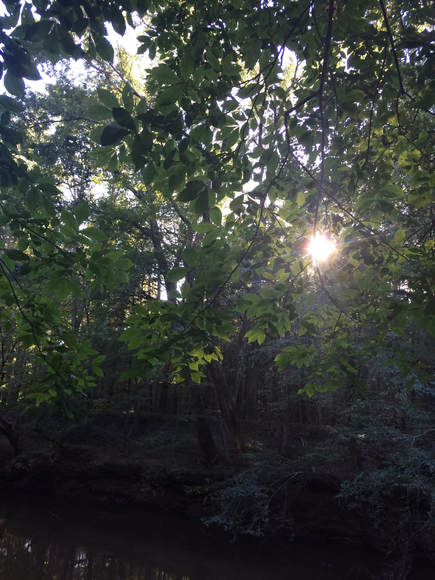 Photo, Joy Salyers, 2016. CC2.0; please attribute if shared. Photo, Joy Salyers, 2016. CC2.0; please attribute if shared. Go outside today, and get under some trees if at all possible. Just take ten minutes -- on your lunch break, right after work, after supper -- to sit still and watch the shadows the leaves make on the ground, or the shapes of the leaves themselves against the sky. If you don't have a tree, find some moving water or a fire. Let your eyes relax and go soft. Don't try to notice anything in particular. Don't try to "empty your mind," or anything you associate with meditation. Just enjoy the shapes of light, shadow, or movement you see for ten minutes. Why: It's doable; it's pleasant; it teaches presence; and it is our job to pay attention to the amazing beauty of nature. What Might Come Up: You might find yourself thinking that you don't have time, or that ten minutes isn't enough time to be worth it. It's probably not literally true that you don't have ten minutes you could redirect to this activity. So you might just notice and acknowledge that you feel resistance, and wonder about its origin with loving curiosity. It might be that you keep busy to avoid feeling too much. It might be that a quiet deep longing inside you knows that if you give it ten minutes, it will want more. It might be that you're afraid you're "do it wrong," or be bored. Here's the great thing - you don't have to figure it out. You can honor the presence of your resistance, and then choose to sit in slight discomfort for 10 minutes! If your rational mind needs more help to go along with you, tell it that you're helping your eyesight or concentration. A Story: When I was a child, I often "zoned out" -- let my eyes unfocus and kind of stared at nothing. I never got in a ton of trouble for it, but I can remember people snapping their fingers in front of my eyes, being told to "snap out of it" in the lunchroom in 2nd or 3rd grade, and being shamed for missing information told me while I was zoning. Now I see my daughter sitting with eyes unfocused often, and I have to admit I sometimes get impatient with her (especially when she's zoning out instead of getting ready for school!) 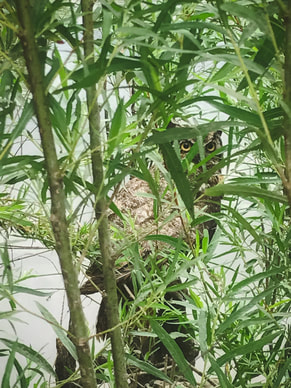 When I participated in a nature-based leadership program a couple of years ago, we were taught "owl eyes" --the practice of letting your eyes look out in a general area, kept soft rather than tightly focused, building the awareness of your entire peripheral vision. It is a gaze of expectant waiting -- if you are looking only at the clump of grass where you saw the animal you want to see again, you will miss it when it emerges from a different place. But if you hold "owl eyes," you are tuned in to the whole field of vision before you, and you can turn on your focused vision to "zoom in" to a place you notice motion. (This is the best way to watch meteor showers, too.) I realize now that when I see my daughter "zone out," she is really naturally engaging owl eyes. She is also naturally entering a meditative state! I feel regret for the times my responses served to train mindfulness out of my children while telling them to "Pay attention!" (How's that for unconsciously colluding with the culture?) Now I try to reflect, "Your body is telling you that you need outside time." A spread designed for my Beloved 's birthday. Note: Make sure you are really ready to hear from the Divine/the Universe/your personal Muse, because she will weigh in! This spread asks what you are being called to in the coming year, a kind of cosmic "what's next?" It's especially good for someone who has already done a lot of growth or come through what has felt like their major lifework, and is wondering what comes now. It could also work well for someone who feels pulled in many directions and wants advice on the best major focus area for the coming year. 1 - The general topic or area
2 - What you want your focus to be (perhaps unconsciously) 3 - What the Universe wants from you 4 - Opposing forces 5 - Supporting forces 6 - The Universe's Desired Outcome 7 - If you acquiesce, your next action to move toward 6. Stay tuned for an example reading using this spread! I often create spreads, because to me tarot is a kind of communication with one 's deeper Self or the archetypes of the Anima Mundi. This one is based on a 7-card bird's eye spread. 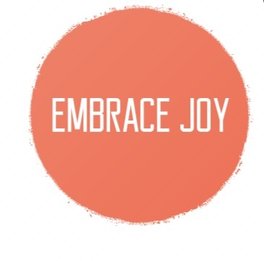 Take advantage of this special offer in July and August only: a one-hour tarot reading or counseling/coaching session for $60! That is 20% off the regular cost of $75. Contact me at [email protected] to schedule your session. We can meet in person in Hillsborough or Durham, NC, or online via Skype. We think of January as being the time for making resolutions, but the summer often affords a break from our daily routine that lets our thoughts wander and new ideas emerge. Give yourself a gift of a session and this year, those new thoughts might take you toward a new life! I'm actually a bit on the fence about Mary Oliver. She is a wonderful crafter of words, and her poems about nature can provide a powerful entryway into a deeper level of relating to a very alive, active Universe. But if you stop with her poetry, you haven't quite gotten there yet, and I think too many people do just that -- read one of her pieces, sigh, and say, "Ah, that's so true!" without walking through the door she has opened to continue on a deeper journey that might actually change them. However, I do like this poem, because it is SUCH an inviting doorway to the act of being present and the habit of joy. And in our culture, even noticing that door, let alone putting one's hand upon its lichen-encrusted knob, is a fairly revolutionary act. It's called "Mindful."
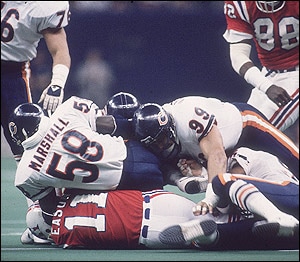 Patriot's QB Tony Eason under a pile of Chicago Bears in Super Bowl XX, in 1985. Da Bears tied the record for most sacks in the game - 7 - and set a record for fewest rushing yards allowed (7) that still stands. Patriot's QB Tony Eason under a pile of Chicago Bears in Super Bowl XX, in 1985. Da Bears tied the record for most sacks in the game - 7 - and set a record for fewest rushing yards allowed (7) that still stands. I went to bed after the halftime show last night. If the Patriots came back from their 21-3 deficit to win, I didn't want to know about it. Just for the record, I was not rooting against the Patriots because their coach and quarterback supported Trump, as I've seen some liberal friends post; I've hated the Patriots for more than 30 years, as any true Bears fan would. So when I woke up this morning to the news that, indeed, the almost inhuman Patriots had come back to win in overtime, I looked for the bright spot. How does Tom Brady do it? He's certainly not the only NFL quarterback to play until almost 40 or beyond (he's 38), but few have maintained the playing level that he does.  Not to mention playing through injury. Since missing all of 2008 due to a devastating tear of both his ACL and MCL, Brady has rarely missed a game from being hurt. He's played with a broken finger, with fractured, ribs, with a sprained ankle . . . how does he do it? He seems to think part of his success is due to his diet. As his personal chef, Allen Campbell, related in an interview, Brady eats about 80% vegetables, whole grains (brown rice, quinoa) and beans, and 20% lean meats. His "body coach" Alex Guerrero also weighs in with fitness suggestions. Many articles online characterize Brady's food and fitness habits as "extreme," "incredibly strict," and even "weird." Certainly eating 100% organic or making raw veggie sushi rolls for your kids may not seem practical to most of us. And some of the assertions his chef has made have been challenged by doctors and nutritionists. (Demonizing cooking with olive oil was the oddest one to me!) BUT. If you look at the underlying goals and priorities, there IS something for all of us to take away, regardless of our feelings toward the Patriots. Most of the tenets of Brady's food strategy are related to reducing inflammation. It's easy to understand why an NFL quarterback would care about keeping inflammation down at all costs. Brady says that when he was 25, he hurt all the time, but by 2008: “I was told by my doctor after the ACL tear that my knee would never be the same. That I would never be able to run around and play with my kids, which was all a bunch of bulls---. That knee feels as good as my other knee. It never swelled up one day in the last six years. What you may not realize is that inflammation is connected to LOTS of health problems. I'm on a mission to help people and communities understand how inflammation works and its connections to their health, including how being stressed out seriously increases the inflammation in your body. For now, here are a few (non-weird) tips, courtesy of Tom Brady. To reduce inflammation:
One reason there was so much press about Brady's diet is that he published a cookbook last year. Sorry, he has instructed the world that it is not a cookbook, but a "nutrition manual . . . a limited edition 'living document.'" Don't get too excited, though; not only is it sold out online, it also costs $200. (You should really go read the description of it, though -- the 100 lb paper and laser-etched wood cover make it sound like one of those hipster spoof ads.)  Me being Research Girl, I figured I could find a couple of example recipes from it, but Brady cagily promoted the "manual" on Facebook with photos that were too blurred to actually read. Note to Tom - see, this is why you have a reputation as not being a great guy (along with your propensity for temper tantrums) -- you sell a cookbook...sorry, nutrition manual ...for $200, and you can't give us peons ONE recipe? (I'm choosing to hope he's splitting the proceeds of the...whatever it is...with the personal chef and body trainer who are actually responsible for its content. Naive?) BUT, Reddit to the rescue! Here is the complete avocado ice cream recipe, with reviews. I'll be sharing lots of research and information about inflammation. If you'd like to work with me on crafting your own personal wellness manual, let me know! |
Joy SalyersCounselor/Coach, Consultant, Folklorist, High Priestess of Where Things Meet and the Places Between Categories
All
|
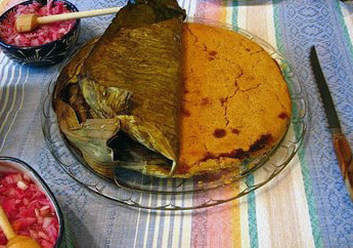
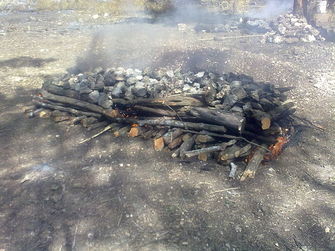


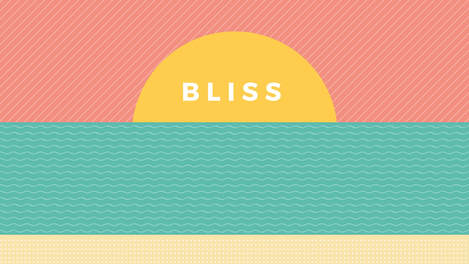

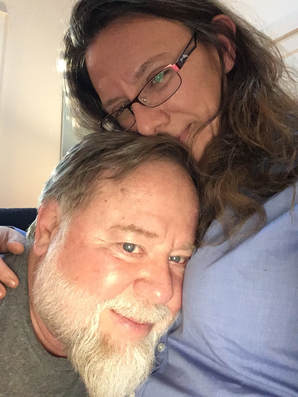
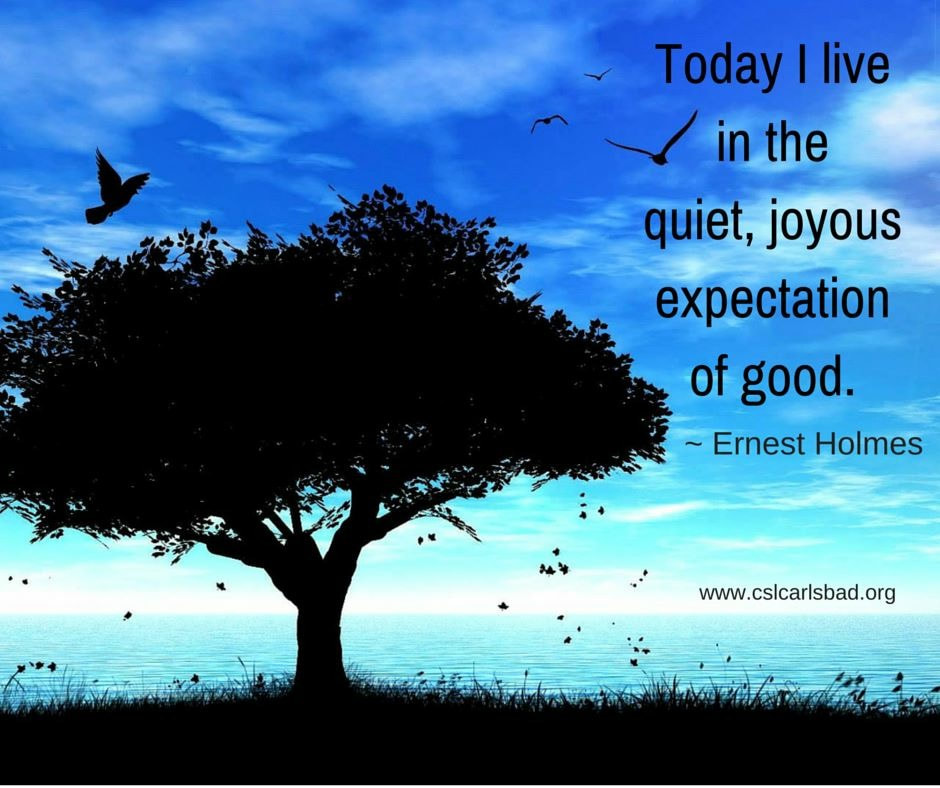
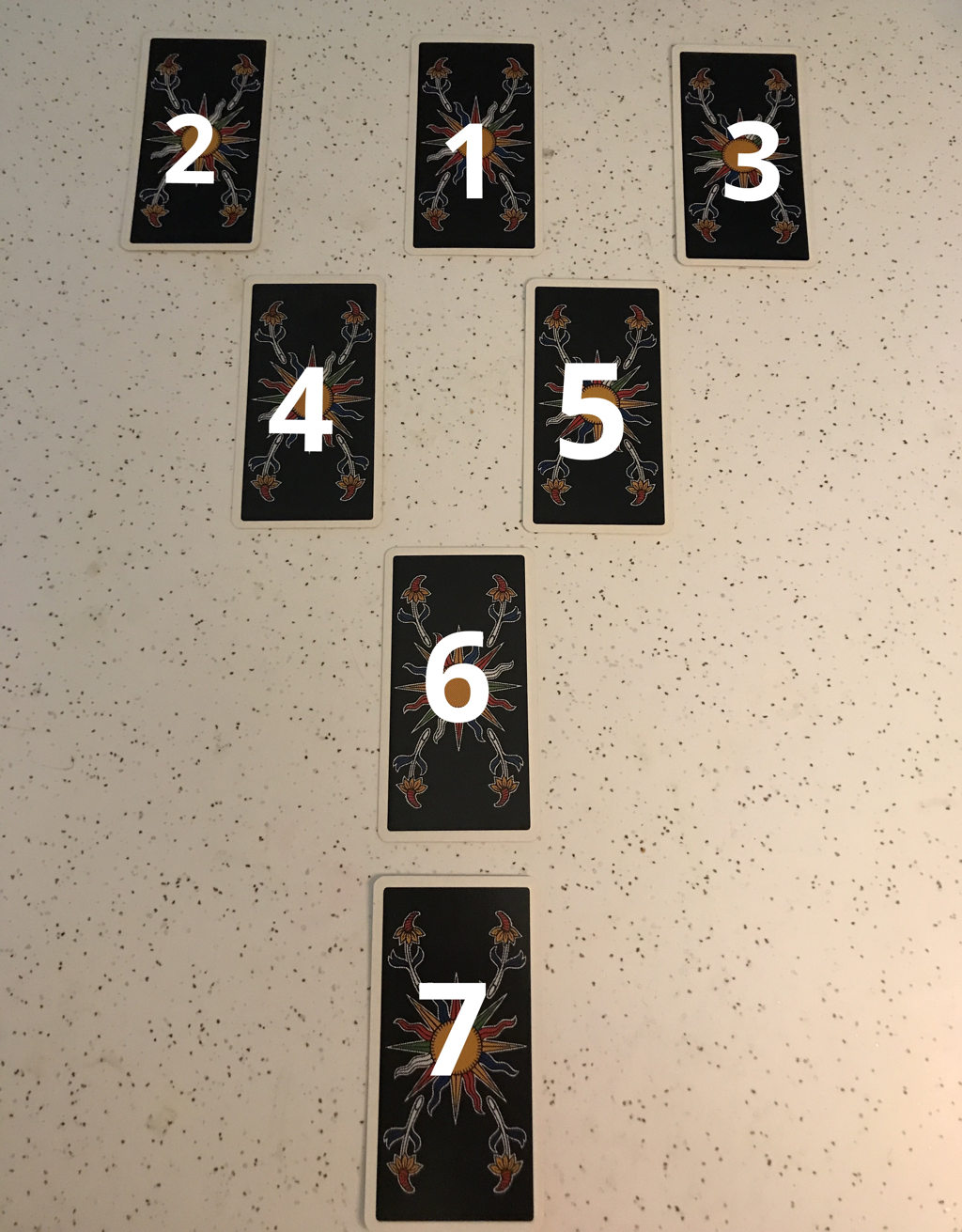
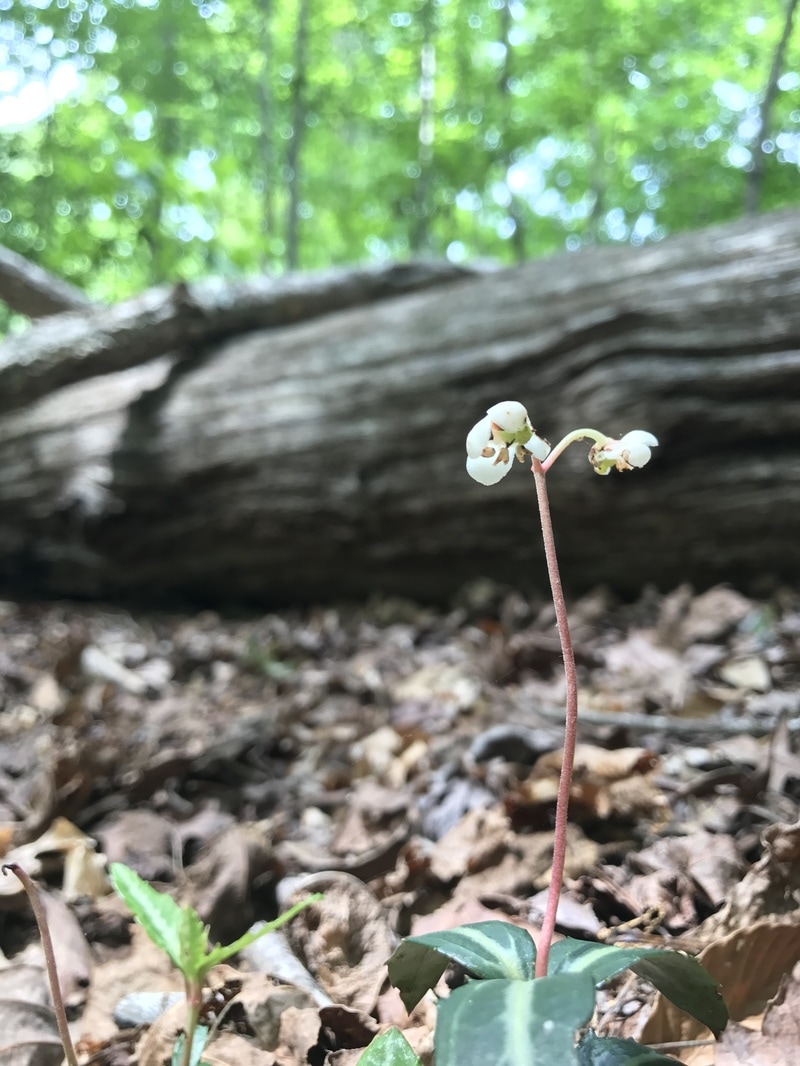

 RSS Feed
RSS Feed